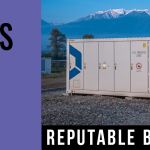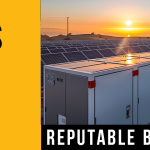 Tesla has acquired German engineering firm Grohmann Engineering to form a new advanced automation segment of its business, producing manufacturing equipment for its factories in the US.
Tesla has acquired German engineering firm Grohmann Engineering to form a new advanced automation segment of its business, producing manufacturing equipment for its factories in the US.
It is believed the acquisition and subsequent creation of Tesla Grohmann Automation will boost production of its stationary storage as well as its automotive segment, with the parent company anticipating the hire of 1,000 advanced engineering and skilled technicians in Germany. This would be in addition to the existing 700 employees on Grohmann’s books.
Tesla reiterated in a blog post announcing the news that it has set itself a target of producing 500,000 cars annually by 2018, which by then will include the Model 3 “affordable” EV with a range of over 200km.
“Accelerating a sustainable energy future is only possible with high-volume factories,” the post read.
“At very high production volumes, the factory becomes more of a product than the product itself.”
While a spokesperson confirmed that production of the cars and stationary storage Powerwalls and Powerpacks will remain in the US, including its EV factory in Fremont, California and the Gigafactory in Nevada, some of Tesla’s automated manufacturing systems will be designed and engineered by the Grohmann team. Tesla said it expected to add more locations for Tesla Grohmann Automation centres in future.
The Grohmann acquisition remains subject to approval by regulators with Tesla hoping to close the deal early next year. The news follows the launch of the second-generation Powerwall residential and Powerpack commercial and industrial storage systems, both with significantly increased energy density from previous models, as well as solar roof tiles in a joint undertaking with SolarCity. Tesla and SolarCity could merge later this month, with shareholders voting on 17 November.
Click Here to Read Full Article
read more




